30–34 High Street, Leatherhead, Surrey, KT22 8AW
Named after the Master of Revels to Queen Elizabeth I and King James I. Edmund Tylney lived at The Mansion which stood on the site of the present library.
The site of the Edmund Tylney was Gothic Lodge. This 1895 image shows the garden of Gothic Lodge and Gothic Cottage.
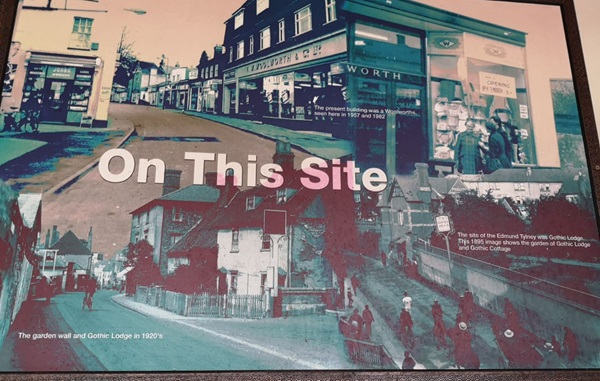
An illustration and text about Edmund Tylney.
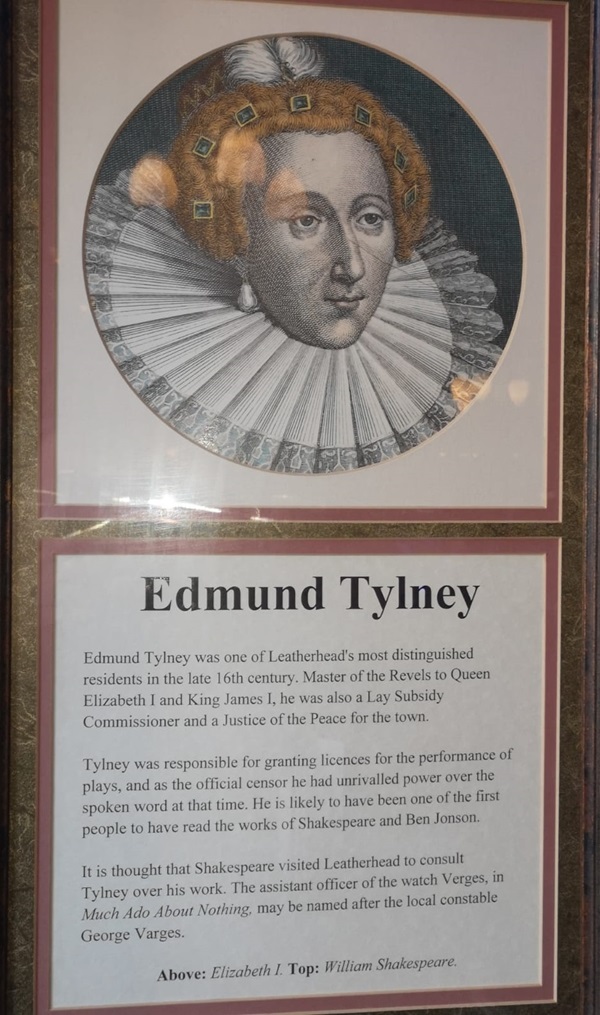
The text reads: Edmund Tylney was one of Leatherhead’s most distinguished residents in the late 16th century. Master of the Revels to Queen Elizabeth I and King James I, he was also a Lay Subsidy Commissioner and a Justice of the Peace for the town.
Tylney was responsible for granting licences for the performer of plays, and as the official censor he had unrivalled power over the spoken word at that time. He is likely to have been one of the first people to have read the works of Shakespeare and Ben Jonson.
It is thought that Shakespeare visited Leatherhead to consult Tylney over his work. The assistant officer of the watch Verges, in Much Ado About Nothing, may be named after the local constable George Varges.
Above: Elizabeth I.
Prints and text about Goblin Hoovers.
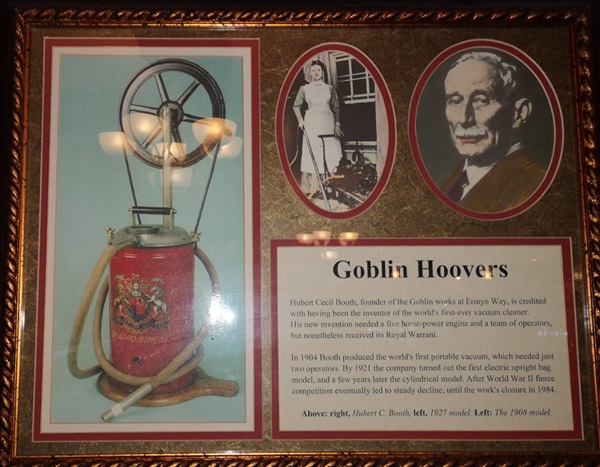
The text reads: Hubert Cecil Booth, founder of the Goblin works at Ermyn Way, is credited with having been the inventor of the world’s first-ever vacuum cleaner. His new invention needed a five horse-power engine and a team of operators, but nonetheless received its Royal Warrant.
In 1904 Booth produced the world’s first portable vacuum, which needed just two operators. By 1921 the company turned out the first electric upright bag model, and a few years later the cylindrical model. After World War II fierce competition eventually led to steady decline, until the work’s closure in 1984.
Above: right, Hubert C Booth, left, 1927 model
Left: The 1908 model.
Photographs of Swan Brewery, including the staff of the brewery a year before its closure.
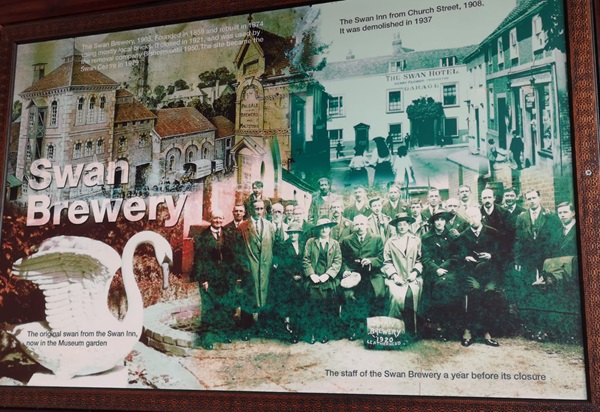
Photographs of High Street in 1927 and 1888.
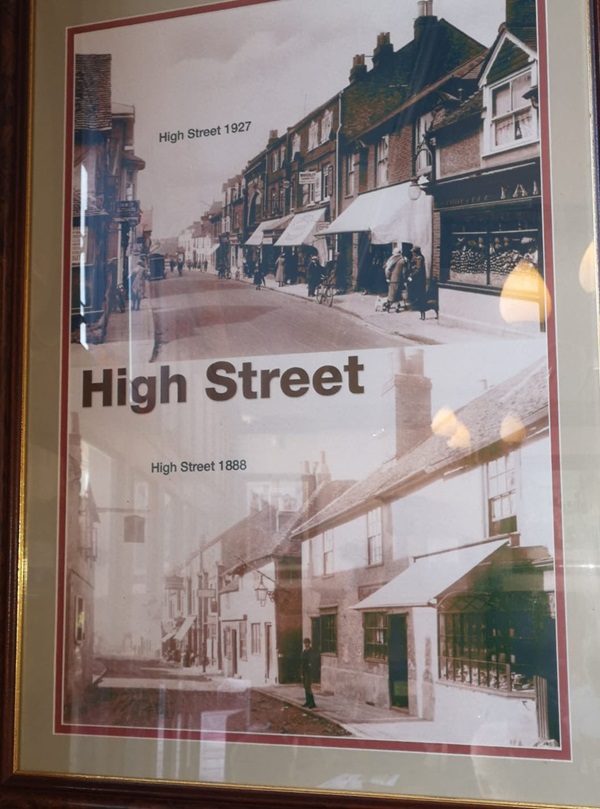
Photographs of the Clock Tower.
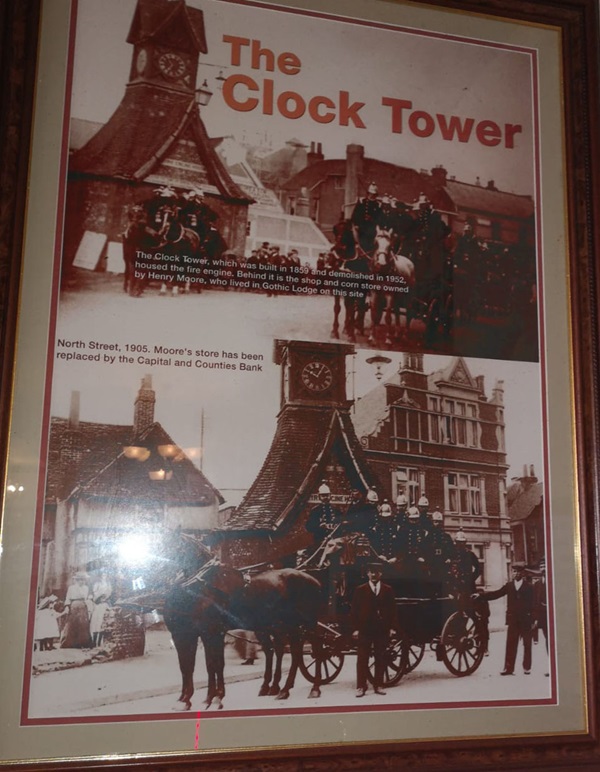
A photograph of Bridge Street, 1905.
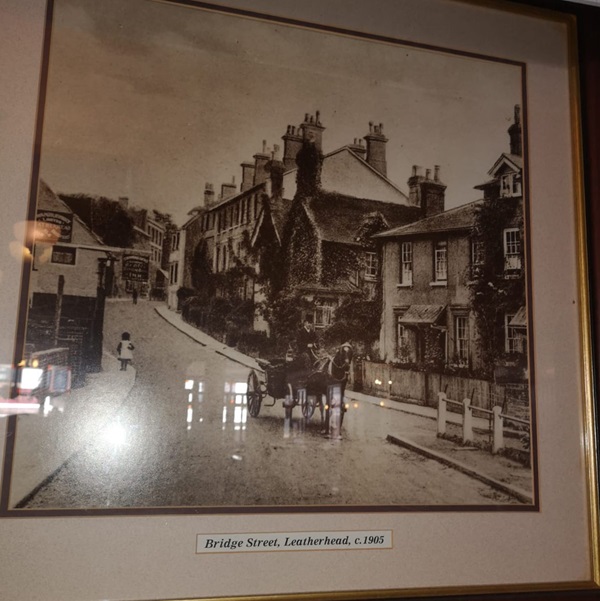
External photograph of the building – main entrance.
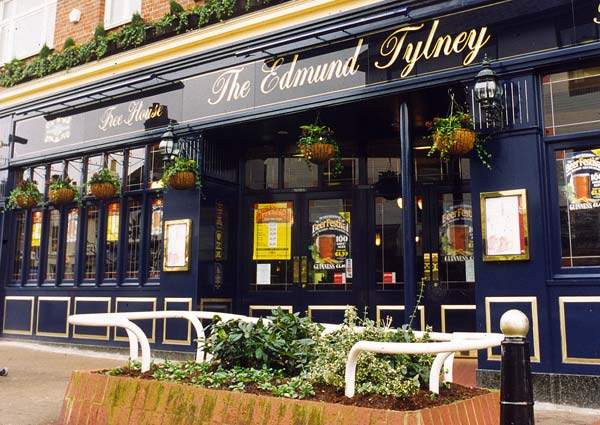
If you have information on the history of this pub, then we’d like you to share it with us. Please e-mail all information to: pubhistories@jdwetherspoon.co.uk